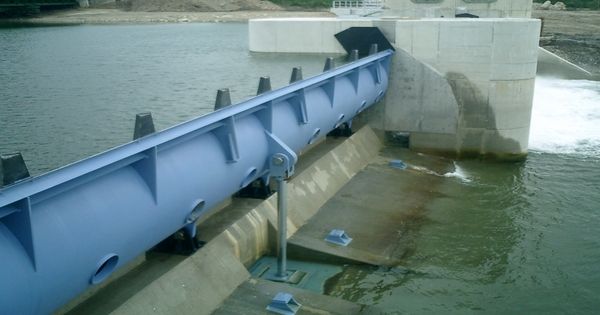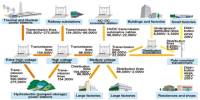Inflatable rubber dams are flexible barriers that are commonly used in civil engineering and water management projects to regulate the flow of water in rivers, streams, canals, and other water bodies. When these cylindrical rubber textiles are inflated, they operate as a weir or dam, raising the upstream water level. The membrane is a multi-layered fabric consisting of synthetic fibers (typically nylon) that are rubberized on one or both sides.
The fabric is both flexible and durable. To reduce or prevent vandalism, implant a layer of stainless steel mesh or ceramic chips in the surface layer. These dams are composed of tough, flexible rubber and are intended to be inflated with air or water to provide a barrier that can be raised or lowered as necessary.
In the 1950s, Norman M. Imbertson of the Los Angeles Department of Water and Power invented inflatable flexible membrane dams (IFMD, rubber dams, tiger dams), which were initially known as fabridams. They are typically installed in stream and river bottoms, and attached to a concrete foundation. They are used to divert water for irrigation, temporarily raise existing dams, control floods, retain water for aquifer recharge, reduce or prevent saltwater intrusion into freshwater areas, protect low-lying coastal areas from tidal flooding, allow fish passage past diversion works, deflation, and sewage retention/separation during flood events.
Here’s how inflatable rubber dams typically work:
- Construction: Inflatable rubber dams are constructed from layers of rubber or similar flexible materials that are reinforced with fabric or other materials to provide strength and durability.
- Installation: The dam is installed across the watercourse where flow control is required. It’s usually anchored to the riverbed or banks to prevent movement.
- Inflation: The dam is inflated using either air or water. In some cases, a combination of both may be used. Air-filled dams are generally easier to install and maintain, while water-filled dams may offer greater stability and resistance to damage.
- Adjustment: Once inflated, the dam forms a barrier that can be adjusted to control the flow of water. By inflating or deflating different sections of the dam, engineers can raise or lower specific parts of the barrier to regulate water levels upstream or downstream.
Operation
Inflatable rubber dams can be operated manually or automatically, depending on the project’s design and specifications. Manual operation may entail opening or closing valves to alter the flow of air or water into the dam, whereas automatic systems may employ sensors and control mechanisms to regulate the dam’s inflation and deflation in response to water levels or other parameters.
Inflatable dams can contain water, air, or both. They typically span 100 meters, with dam heights of less than 5 meters. For big overflows, the membrane is typically deflated, however, a small nappe is often used to cover the inflated dam.
















